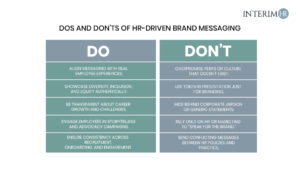In today’s competitive talent market, employer branding has become just as important as customer branding. Job seekers now view companies much like consumers view products—researching values, culture, and reputation before committing. According to LinkedIn, 75% of job candidates research an employer’s reputation before applying, and strong employer branding can reduce turnover by up to 28% and boost employee retention.
At the center of this brand perception lies HR leadership. Human Resources is no longer just about compliance and administration; it is the strategic driver of talent brand, employee engagement, and cultural strategy. Effective HR leadership directly influences how employees, candidates, and even customers perceive a company, making HR solutions and leadership practices vital to long-term success.
The Link Between HR Leadership and Employer Branding
Employer branding is not a marketing campaign—it is the lived reality of employees and the external perception of that experience. HR leadership plays a pivotal role in aligning these internal and external narratives, strengthening employee retention and ensuring the brand message connects with the right talent.
- Recruitment and Selection: HR ensures that hiring practices reflect the company’s mission and values. Partnering with executive recruiters or leveraging recruitment process outsourcing (RPO solutions) can also help organizations attract candidates aligned with the brand.
- Onboarding and Development: First impressions shape long-term loyalty. HR leaders who design structured, value-driven onboarding create ambassadors from day one.
- Policies and Culture: From flexible work policies to diversity initiatives, HR defines the employee experience that ultimately becomes the brand story shared externally.
When HR leaders set the tone for workplace culture, employer branding becomes authentic and sustainable.
Employee Experience as a Branding and Retention Tool
A strong employer brand doesn’t come from slogans—it comes from employee experience. Studies show that 92% of people trust recommendations from employees over company advertising. This means employees themselves are the most credible brand messengers.
HR leadership can elevate the employee experience through:
- Career Development Programs – Offering growth opportunities signals that the organization invests in its people, a key factor in employee retention.
- Recognition & Rewards – Public acknowledgment of contributions fosters pride and loyalty.
- Wellbeing Initiatives – Mental health support, flexible scheduling, and wellness programs show care beyond productivity.
- Inclusive Policies – Representation and belonging enhance brand credibility.
By focusing on the day-to-day experience, HR leaders turn employees into advocates who naturally amplify the employer brand across professional networks.
Communicating Company Values Through HR Solutions
A strong employer brand depends on values that are clearly articulated and consistently reinforced. HR leadership ensures that values are not just words on a wall but embedded in actions and policies, aligning with broader workforce management solutions and HR policies.
Ways HR leaders communicate values:
- Embedding values in job descriptions and recruitment messaging.
- Incorporating company principles into performance reviews.
- Hosting workshops and recognition programs that highlight value-driven behaviors.
- Ensuring leadership at every level models the values in decision-making.
Dos and Don’ts of HR-Driven Brand Messaging for Strong Employer Branding
This simple framework helps HR leaders maintain credibility and authenticity in employer branding.

Ensuring Consistency Across Multiple Locations with Workforce Management Solutions
For companies with multiple offices or branches, consistency is often the biggest employer branding challenge. Different managers, local practices, and cultural nuances can create fragmented employee experiences. HR leadership must serve as the unifying force.
Strategies for consistency:
- Standardized Policies with Local Flexibility – Provide core company guidelines while allowing room for regional adaptations.
- Centralized Communication – Use unified platforms to ensure all employees hear the same message.
- Shared Recognition Programs – Celebrate achievements across all offices to create a sense of unity.
- Leadership Training – Equip local managers to embody and enforce the company’s cultural values.
When executed well, consistency strengthens trust among employees and candidates, reinforcing a stable and reliable employer brand.
Case Example: Brand Reputation Turnaround Through HR Leadership
A mid-sized financial services company in Chicago struggled with high turnover and poor Glassdoor reviews, where employees cited toxic culture and lack of growth opportunities. The company’s employer brand had become a barrier to attracting new talent.
What Changed?
A new HR leader was brought in with a mandate to reshape the culture. Initiatives included:
- Revamping onboarding to emphasize mentorship.
- Launching leadership development programs.
- Establishing a quarterly recognition system.
- Prioritizing diversity and inclusion through updated hiring practices.
The Results:
Within 18 months, employee satisfaction scores rose by 40%, turnover dropped by 25%, and the company began receiving recognition on “Best Places to Work” lists in its sector. Candidates cited positive employee reviews as a reason for applying.
This turnaround illustrates how HR leadership can directly influence employer branding and create tangible business outcomes, while also highlighting the importance of strategic HR solutions and alignment with staffing models such as contingent staffing, interim staffing, and permanent staffing.
Conclusion: HR Leadership as the Cornerstone of Culture Strategy and Talent Branding
Employer branding is no longer optional—it is essential for attracting, engaging, and retaining top talent. HR leadership sits at the heart of this effort, transforming company culture, employee experience, and values into a compelling brand story.
When HR leaders prioritize consistency, authenticity, and employee advocacy, organizations benefit from stronger reputations, improved employee retention, and a sustainable competitive edge in the talent market. By integrating culture strategy with the right HR solutions, companies can position themselves as employers of choice.
Ready to strengthen your employer brand through HR leadership? Discover tailored strategies with Interim HR Consulting —your trusted partner in executive placement, direct hire staffing services, and managed service provider staffing.
FAQs on HR Leadership, Employer Branding, and Employee Retention
Q1: What role does HR play in employer branding?
HR is the driver of employer branding because it shapes recruitment, onboarding, policies, and culture. Employees experience HR decisions daily, and those experiences define the brand externally.
Q2: How can HR leaders influence company culture and brand identity?
HR leaders influence culture by designing policies, recognition systems, and development programs that reflect company values. When aligned with brand identity and supported by workforce management solutions, these actions create consistency between internal culture and external messaging.
Q3: What are signs of a strong internal employer brand?
High employee engagement, low turnover, positive employee reviews, strong internal advocacy, and alignment between stated values and actual workplace practices all signal a strong employer brand.
